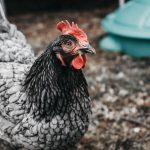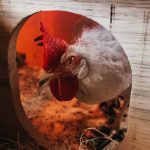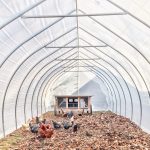Maintaining dry conditions for chickens during feeding is essential for their health and welfare. Wet environments can cause various health issues in chickens, including respiratory problems, fungal infections, and frostbite in cold weather. Moisture around feeding areas can attract pests and parasites like mites and lice, further compromising chicken health.
Wet feed is prone to mold growth, which can be harmful or toxic if consumed by chickens. Therefore, providing a dry and clean feeding environment is crucial to prevent these health risks. Wet conditions also affect feed quality.
Damp feed spoils more quickly, leading to waste and increased costs for chicken owners. Additionally, moist feed may not provide the necessary nutrients for optimal chicken growth and egg production. Ensuring dry feeding conditions helps maintain feed quality, supporting chicken health and productivity.
Understanding the importance of keeping chickens dry while eating is fundamental for maintaining overall flock health and well-being.
Table of Contents
- 1 Providing adequate shelter for chickens during feeding time
- 2 Using appropriate feeders and waterers to minimize moisture
- 3 Implementing proper drainage in the chicken coop
- 4 Utilizing bedding materials to absorb moisture
- 5 Ensuring proper ventilation to prevent dampness
- 6 Regular maintenance and cleaning to keep the feeding area dry
- 7 FAQs
- 7.1 What are some tips for keeping chickens dry while eating?
- 7.2 Why is it important to keep chickens dry while eating?
- 7.3 How can a covered feeding area help keep chickens dry while eating?
- 7.4 What are raised feeding platforms and how do they help keep chickens dry while eating?
- 7.5 What are some features to look for in waterproof feeders and waterers for chickens?
Key Takeaways
- Keeping chickens dry while eating is important to prevent health issues and maintain their overall well-being.
- Providing adequate shelter for chickens during feeding time helps to protect them from the elements and minimize exposure to moisture.
- Using appropriate feeders and waterers can help minimize moisture and prevent feed from getting wet and spoiling.
- Implementing proper drainage in the chicken coop is essential to prevent water accumulation and maintain a dry environment.
- Utilizing bedding materials such as straw or wood shavings can help absorb moisture and keep the feeding area dry.
Providing adequate shelter for chickens during feeding time
Minimizing Health Risks and Ensuring Access to Quality Feed
By offering a dry and sheltered environment for feeding, chicken owners can help to minimize the risk of health issues and ensure that their birds have access to high-quality feed. In addition to protecting the feed from moisture, providing adequate shelter during feeding time can also help to reduce competition and aggression among the flock.
Reducing Competition and Promoting a Harmonious Flock Dynamic
When chickens have access to multiple feeding stations in a sheltered area, they are less likely to fight over food, which can lead to injuries and stress. By creating a calm and comfortable environment for feeding, chicken owners can promote a harmonious flock dynamic and ensure that all birds have equal access to the feed.
Maintaining Health and Well-being
Overall, providing adequate shelter for chickens during feeding time is essential for maintaining their health and well-being. By prioritizing the comfort and safety of their birds, chicken owners can create a happy and thriving flock.
Using appropriate feeders and waterers to minimize moisture
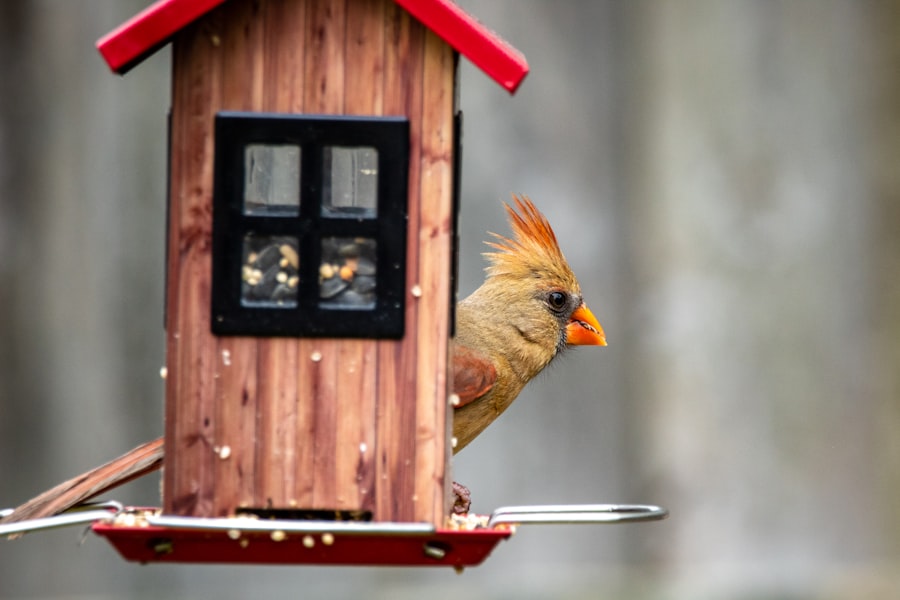
Using appropriate feeders and waterers is essential for minimizing moisture in the feeding area. For feeders, it is important to choose designs that protect the feed from the elements and prevent spillage. Hanging feeders or treadle feeders can be effective options for keeping feed dry and reducing waste.
Similarly, waterers should be selected based on their ability to prevent spillage and contamination. By choosing waterers with covers or nipples, chicken owners can help to minimize moisture in the feeding area and ensure that chickens have access to clean and fresh water. Furthermore, it is important to regularly inspect and maintain feeders and waterers to prevent leaks or malfunctions that could lead to moisture accumulation.
By keeping these essential feeding tools in good condition, chicken owners can help to create a dry and hygienic environment for their birds. Additionally, positioning feeders and waterers in sheltered areas can further minimize the risk of moisture exposure. By using appropriate feeders and waterers, chicken owners can effectively reduce the potential for dampness in the feeding area and support the health of their flock.
Implementing proper drainage in the chicken coop
Implementing proper drainage in the chicken coop is essential for preventing moisture buildup in the feeding area. This can be achieved by ensuring that the coop is situated on well-drained ground and that any excess water is directed away from the structure. Additionally, installing gutters and downspouts can help to channel rainwater away from the coop, further reducing the risk of moisture infiltration.
By implementing proper drainage measures, chicken owners can help to create a dry and comfortable environment for their birds to eat and thrive. Furthermore, it is important to regularly inspect the coop for any signs of water damage or leaks that could lead to moisture issues. Addressing any drainage problems promptly can help to prevent mold growth, pest infestations, and other potential health hazards for the flock.
By taking proactive steps to ensure proper drainage in the chicken coop, chicken owners can help to maintain a clean and dry environment for feeding and support the overall well-being of their birds.
Utilizing bedding materials to absorb moisture
Utilizing bedding materials in the chicken coop can help to absorb moisture and create a dry environment for feeding. Materials such as straw, wood shavings, or shredded paper can be spread on the coop floor to absorb any excess moisture and provide a comfortable surface for chickens to eat. Additionally, regularly turning over the bedding can help to prevent the buildup of dampness and reduce the risk of mold growth.
By using absorbent bedding materials, chicken owners can help to maintain a dry and hygienic environment for their birds while they are eating. Furthermore, it is important to regularly replace soiled bedding with fresh material to ensure that chickens have a clean and dry area for feeding. This can help to prevent odors, ammonia buildup, and potential health issues associated with damp bedding.
By utilizing bedding materials effectively, chicken owners can create a comfortable and inviting space for their birds to eat while minimizing the risk of moisture-related problems.
Ensuring proper ventilation to prevent dampness
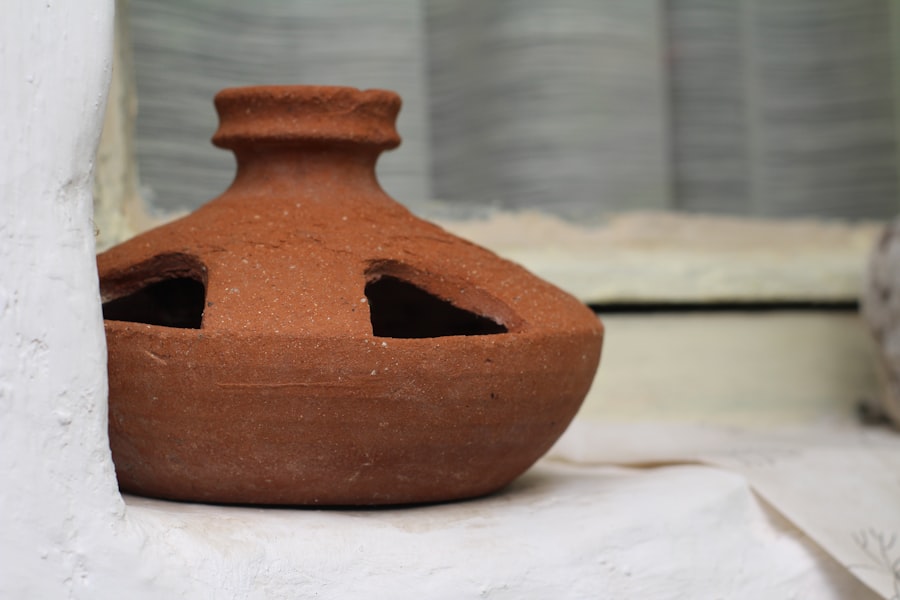
Removing Excess Moisture and Preventing Respiratory Issues
Ensuring proper ventilation in the chicken coop is essential for preventing dampness in the feeding area. Good air circulation can help to remove excess moisture from the environment, reducing the risk of mold growth and respiratory issues for the flock. This can be achieved by installing vents or windows in the coop to allow fresh air to enter and stale air to exit.
Positioning Feeding Areas for Optimal Airflow
Additionally, positioning feeding areas near ventilation openings can help to ensure that chickens have access to fresh air while they are eating. Furthermore, it is important to monitor humidity levels in the coop and adjust ventilation as needed to maintain a healthy environment for the flock.
Balancing Ventilation and Insulation in Colder Climates
In colder climates, it may be necessary to balance ventilation with insulation to prevent drafts while still promoting air circulation.
The Benefits of Proper Ventilation
By ensuring proper ventilation in the chicken coop, chicken owners can help to prevent dampness in the feeding area and support the overall health of their birds.
Regular maintenance and cleaning to keep the feeding area dry
Regular maintenance and cleaning are essential for keeping the feeding area dry and hygienic for chickens. This includes removing spilled feed, soiled bedding, and any other debris that could contribute to moisture buildup. Additionally, regularly cleaning feeders and waterers can help to prevent mold growth and contamination that could compromise the quality of the feed and water.
By maintaining a clean feeding area, chicken owners can help to minimize the risk of health issues associated with dampness. Furthermore, it is important to inspect the feeding area regularly for any signs of leaks or damage that could lead to moisture infiltration. Addressing any maintenance issues promptly can help to prevent larger problems down the line and ensure that chickens have a dry and comfortable environment for eating.
By prioritizing regular maintenance and cleaning, chicken owners can create a healthy and inviting space for their birds to enjoy their meals while minimizing the risk of moisture-related issues. In conclusion, keeping chickens dry while eating is essential for maintaining their health and well-being. By providing adequate shelter, using appropriate feeders and waterers, implementing proper drainage, utilizing bedding materials, ensuring proper ventilation, and prioritizing regular maintenance and cleaning, chicken owners can create a dry and comfortable environment for their flock to eat and thrive.
By understanding the importance of keeping chickens dry while eating and taking proactive steps to minimize moisture in the feeding area, chicken owners can support the overall health and productivity of their birds.
If you’re looking for tips on how to keep chickens dry while eating, you might also be interested in learning about how to design a cozy and functional chicken coop interior. This article offers great ideas for creating a comfortable and dry space for your chickens to eat and rest in. It’s important to consider the layout and materials of the coop to ensure that your chickens stay dry and healthy.
FAQs
What are some tips for keeping chickens dry while eating?
Some tips for keeping chickens dry while eating include providing a covered feeding area, using raised feeding platforms, and using waterproof feeders and waterers.
Why is it important to keep chickens dry while eating?
It is important to keep chickens dry while eating to prevent health issues such as respiratory problems, feather damage, and potential mold growth in their feed.
How can a covered feeding area help keep chickens dry while eating?
A covered feeding area can help keep chickens dry while eating by providing protection from rain, snow, and other elements, keeping their food and water dry and clean.
What are raised feeding platforms and how do they help keep chickens dry while eating?
Raised feeding platforms are elevated platforms where chickens can access their food and water. They help keep chickens dry while eating by preventing moisture and dirt from getting into their feed and water.
What are some features to look for in waterproof feeders and waterers for chickens?
Some features to look for in waterproof feeders and waterers for chickens include tight-fitting lids, durable materials, and designs that prevent spillage and contamination.
Meet Walter, the feathered-friend fanatic of Florida! Nestled in the sunshine state, Walter struts through life with his feathered companions, clucking his way to happiness. With a coop that’s fancier than a five-star hotel, he’s the Don Juan of the chicken world. When he’s not teaching his hens to do the cha-cha, you’ll find him in a heated debate with his prized rooster, Sir Clucks-a-Lot. Walter’s poultry passion is no yolk; he’s the sunny-side-up guy you never knew you needed in your flock of friends!



